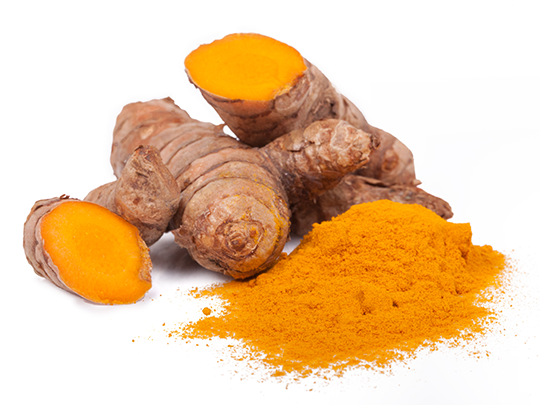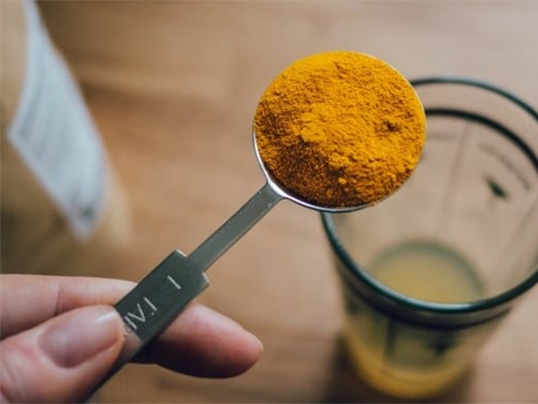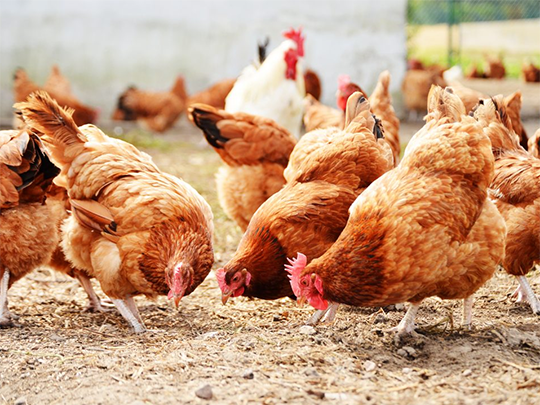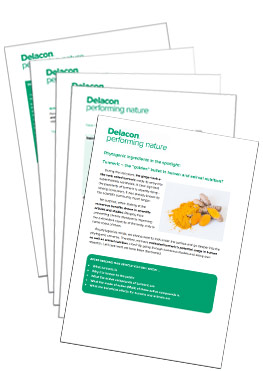Turmeric – the “golden” bullet in human and animal nutrition? (part 2)
As phytogenius minds, we always want to look under the surface and go deeper into the phytogenic universe. Therefore, we have evaluated turmeric’s potential usage in human as well as animal nutrition. How? By going through numerous studies and doing own research. Let’s see what we have been discovered.
Did you know that turmeric is the main ingredient in curry? If not, make sure to read the first part of our turmeric series. There you get an overview about the origin, the use and the active ingredients of turmeric.
But this is only the tip of the iceberg when it comes to this powerful plant. Let’s dive deeper into the phytogenic universe.

Mode of action: Beneficial effects of turmeric for humans and animals?
Numerous studies describe beneficial effects of turmeric on physiological processes in humans and animals. However, when having a closer look at those studies, some benefits need to be relativized. First, most studies demonstrating these beneficial effects of turmeric are performed in vitro with cell cultures rather than whole animals or humans. And second, the majority of studies showing efficacy were not carried out by using the whole herb, but instead using turmeric’s main active compound curcumin in a purified form.
Are the beneficial efffects of turmeric just of academic relevance restricted to specific circumstances, or will it provide advantages beyond laboratory environments?

Turmeric actively influences the physiology
Due to the extensive rate of generated data, we will only focus on two examples for the role of curcumin in anti-inflammatory and antioxidant processes. Inflammation can be triggered by a wide range of factors such as foreign substances, infections, and tissue damage. Cells in the body need to be capable to adapt to the respective stressors. Curcumin was shown especially in cell culture studies to be able to inhibit multiple pro-inflammatory pathways indirectly by influencing genes and proteins involved in the normal cellular response to such stressors.
Key factor: NF-κB
The “Nuclear factor kappa-light-chain-enhancer of activated B cells”, in short NF-κB, is really important in this process. This protein complex is found in almost all animal cell types and is involved in cellular responses to stimuli such as stress, cytokines, free radicals, heavy metals, ultraviolet irradiation, oxidized LDL, and bacterial or viral antigens. Beside cell culture studies, it was also shown for example in mice that anti-inflammatory effects of curcumin are, at least partly, mediated by its effects on NF-κB, resulting in protective effects against an experimentally induced inflammation.
Situation of turmerics’ effects regarding health in vivo

Beside its anti-inflammatory and anti-oxidant beneficial effects of tumeric, curcumin has been suggested as a potential natural health product against a variety of other problems provided a review, summarizing antibacterial, antiviral and antifungal activity of curcumin in different experimental assays, based mainly on in vitro approaches and rodent models. Curcumin is also discussed to be a potent immunomodulatory agent. For example, it was capable to improve the humoral immune response in laying hens, especially regarding the primary antibody responses. Anticancer properties have been demonstrated for example in the in vivo ovarian carcinoma models SKOV3ip1 and HeyA8 in athymic mice, with curcumin being able to decrease tumor growth.
What about an antidiabetic effect?

The antidiabetic efficacy of curcumin was tested in a range of different models, but similarly to other topics, mainly in vitro using cell cultures or with rats and mice. In the rodent studies, application of curcumin resulted often in reduced blood glucose levels and beneficial effects of tumeric in other type-2 diabetes-mellitus related parameters such as insulinresistance, body and liver weight. There are also indications that curcumin could positively affect major problems of diabetes, including insulin resistance, hyperglycemia, hyperlipidemia, islet apoptosis and necrosis in humans. There has been also research on a disorder often associated with type-2 diabetes, the nonalcoholic fatty liver disease (NAFLD). Curcumin extract seems to be a promising candidate for reduction of certain parameters (alanine transaminase, and aspartate transaminase), while the role for turmeric is less clear for treatment of NAFLD16.
Despite promising potential to the above described health disorders, there seem to be fields of usage without any useful efficacy of curcumin. For example, Mazzanti and DiGiacomo came to a devastating conclusion when reviewing five clinical studies on the role of curcumin (they also reviewed resveratrol, another much praised plant compound) in the management of cognitive disorders: “The results of published trials are disappointing and do not allow to draw conclusions about the therapeutic or neuroprotective potential of curcumin and resveratrol.”
Given the sheer amount of publications concerning turmeric, it is basically impossible for researchers to keep up with the state-of-the-art in this research area. An attempt to summarize all knowledge on human in vivo and clinical studies was done by Nelson et al.
Analyzing more than 120 clinical studies related to different health topics, the authorsconcluded that no double-blinded, placebo controlled clinical trial of curcumin has been successful. Their explanation for this conclusion is based on the fact, that “no form of curcumin, or its closely related analogues, appears to possess the properties required for a good drug candidate (chemical stability, high water solubility potent and selective target activity, high bioavailability, broad tissue distribution, stable metabolism, and low toxicity)”. (references upon request)
Do you want the entire article as PDF including all references?

You are only one click away.
Learn more about the effects of turmeric on the performance of livestock animals

Marlene Forrai
Storyteller, foodie, life-long learner – may be the three words that describe me best. Unfortunately, you cannot make a living by only eating food, even though it’s healthy. Therefore, I have developed my skills in Marketing, Online Communications and Content Management to enlighten people around the globe about the power of nature and its contribution to animal as well as human health. Since February 2022, Marlene started a new career path outside of Delacon.










